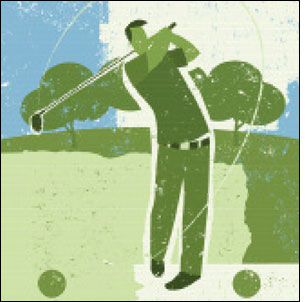Aug 01, 2011Presented below is part two of an 11-part series examining the use of radio frequency identification for unexpected applications. In this chapter, we consider RFID's use in the world of athletics.
11. Working Out
Curves International features an automated personal-training system that provides members with immediate feedback during training. An electronic device containing an RFID reader is mounted on each piece of equipment in the circuit, and members wear RFID-embedded wristbands to activate the system. Two health clubs in Turkey employ an RFID system that lets members gain entrance, purchase food and gear, secure their lockers and track their workouts. (See RFID Pumps Up Women's Workouts and RFID Helps Turkish Gym-Goers Get Fit.)
12. Saving Lives
A satellite-based RFID system that includes speed and temperature sensors not only gives fans a near-real-time view of Alaska's Iditarod Trail Sled Dog Race, it also helps rescue mushers who get into trouble. (See Tracking System Is a Lifesaver in World's Toughest Race.)
13. Preventing Heatstroke
High-school football teams in Atlanta wear helmets containing built-in RFID-enabled heat sensors, which transmit a player's body temperature to coaches and trainers on the field. The system can detect heatstroke symptoms before the dangerous condition occurs. (See Georgia High School Football Teams Put RFID Into Play.)
The National Association for Stock Car Auto Racing is RFID-tracking the chassis on each car that races in its Sprint Cup Series, as well as special fuel tanks known as fuel cells. This allows the organization to ensure that each racing team complies with its regulations, safeguarding both the cars and their drivers. (See NASCAR Keeps Races Safe With RFID.)
15. Changing Lazy Kids' Habits
Boltage's mission is to make walking and biking to school a way of life. To that end, the multistate program uses RFID to keep track of which kids walk and bike to school, so it can reward those who are adopting healthier habits. The prototype system was called Freiker, which stands for FREquent biker. (See RFID Motivates Schoolkids to Bike It.)
16. Watching Race Horses
While binoculars are still common at racetracks, many racing, betting and media organizations are relying on an RFID-based tracking system. A tag installed in a saddle blanket can determine precisely where each horse is, how fast it's going and the distance traveled. (See RFID Is a Winner in the Sports Arena.)
17. Collecting Sports Memorabilia
The collectibles industry has always been vulnerable to fraud. But thanks to an RFID-enabled authentication service, more than 3,000 collectors who attended The Football Spectacular Show in Dallas have physical and electronic records proving the autographs they obtained are genuine. (See RFID Gives Sports Memorabilia Stamp of Authenticity.)
Hikers in the Veglia-Devero Natural Park can hit the trails with water, trail mix and an RFID reader. The reserve, located on Italy's border with Switzerland, installed a series of RFID tags along its trails. Hikers can use the handheld device to access video and audio information about the park's natural history, wildlife, foliage and more. (See RFID Climbs Mountains in Italian Alps.)
19. Supporting Olympians
RFID helps facilitate the Special Olympics' Healthy Athletes initiative, a global effort to provide free health screenings for children and adults with intellectual disabilities. In the past, language barriers between entrants, volunteers and doctors from different countries sometimes led to misunderstandings. Now, the athletes' RFID-enabled ID cards ensure the correct information is entered into their patient records. (See Special Olympics Scores With RFID.)
20. Locating Golf Balls
Too many golfers spend too much time searching the grounds for little white balls. The RadarGolf system helps them get back in the game quickly. Golfers can find lost balls, which have an embedded RFID tag, by using a handheld reader. (See RFID Is a Winner in the Sports Arena.)
Click here to read about RFID's use in other unexpected applications.
Illustration: iStockphoto

